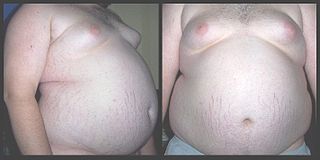Patients undergoing bariatric surgery for severe obesity are often left with excess, sagging skin affecting all areas of the body–including the face. The unique challenges of facelift surgery in this group of patients–and effective techniques for addressing them–are presented in a paper in the February issue of Plastic and Reconstructive Surgery®, the official medical journal of the American Society of Plastic Surgeons (ASPS).
Kailash Narasimhan, MD, and colleagues of University of Texas Southwestern Medical Center, Dallas, outline their approach to facelift surgery in patients who have lost 100 pounds or more after bariatric surgery. “In the massive weight loss population there are common techniques which we feel can enhance results in these patients,” the researchers write. Rod J. Rohrich, MD, Editor-in-Chief of Plastic and Reconstructive Surgery, is a co-author of the new study.
Unique Challenges of Facelift Surgery after Massive Weight Loss
“Massive weight loss surgery patients in general have a large amount of redundant skin and soft tissue,” according to Dr. Narasimhan and colleagues. Such patients commonly undergo procedures called body contouring to remove excessive skinfolds in upper and lower body.
In the facial area, excess skin causes cosmetic problems like a “droopy” face and “turkey” neck. The researchers note, “Patients are particularly displeased with their post bariatric face and neck because they cannot camouflage this area with clothing.”
From a database of nearly 1,100 facelift patients, Dr. Narasimhan and coauthors identified 22 patients who underwent facelift surgery after major weight loss. The patients were 15 women and seven men, average age 53 years. In patients with available data, average weight loss 145 pounds. All patients had been at a stable weight for at least six months before surgery.
The researchers outline their technical approach, targeting the unique characteristics of patients with massive weight loss. Most patients had loss of volume in the midface and around the mouth, and all had excess skin in the cheeks (jowls) and neck.
Recommended Techniques Address ‘Deflation and Skin Laxity’ Dr. Narasimhan and colleagues chose plastic surgery techniques that address the increased skin laxity and facial “deflation” in this group of patients. The researchers note the condition of the skin after massive weight loss is similar to aging skin, with loss of underlying fat and decreased skin thickness.
Compared to the typical facelift patient, patients with massive weight loss needed a larger volume of fat augmentation, increased tightening of the cheek and neck skin, and more extensive elevation of the underlying muscle and other facial tissues. Most patients underwent other procedures–such as eyelid surgery, forehead lift procedures, forehead left, or facial resurfacing–at the same time.
Using this approach, Dr. Narasimhan and colleagues achieved excellent aesthetic outcomes. Patients achieved significant improvement in facial fullness and shape, with no major complications. Given the additional challenges in massive weight loss patients, the authors were pleased to note that the improvements were well maintained over two years’ follow-up, similar to the results achieved in other facelift patients.
While emphasizing the need for an individualized approach in every case, Dr. Narasimhan and coauthors believe that their modified techniques can help to address the unique characteristics of patients seeking facelift surgery after massive weight loss. They conclude, “These strategies help achieve the goals we all strive for in all of our facial rejuvenation patients.”
If our reporting has informed or inspired you, please consider making a donation. Every contribution, no matter the size, empowers us to continue delivering accurate, engaging, and trustworthy science and medical news. Independent journalism requires time, effort, and resources—your support ensures we can keep uncovering the stories that matter most to you.
Join us in making knowledge accessible and impactful. Thank you for standing with us!


Dont get surgery to good try this http://myweightlosssimplified.com/